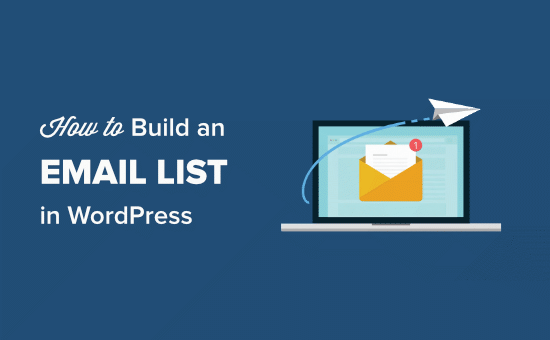New Strategies On Choosing A Physical Therapists Email List
Wiki Article
What Are The Factors I Should Take Into Consideration When Buying A Family Medicine Email Database?
Consider a number of aspects when purchasing an email list for Family Medicine. This will ensure you get top-quality information that is reliable and in compliance with the law, to use for your marketing campaigns. What you should consider is 1. Accuracy of data and quality
The source of data - Make sure that the data is collected from reliable sources. This includes medical directories as well as licensing boards. The email addresses of family medicine professionals' addresses must be accurate up-to-date and tailored to your target audience.
Verification Process: Find out what the verification process is for your provider. To get rid of inactive or invalid emails, the list of email addresses should be cleaned regularly and kept up to date. Validated emails increase the likelihood of delivery and reduce bounce rates.
Segmentation options This list should contain segments based on variables like the location (country, state or city) as well as the level of experience, practice size and the specific areas of interest (e.g. pediatrics or geriatrics, or preventive medicine). Segmentation facilitates more targeted and targeted outreach, which increases the rate of engagement.
2. Legal Regulations
Data Privacy Laws : Ensure that your list conforms to the General Data Protection Regulations (GDPR) for Europe, California Consumer Privacy Acts (CCPA) for the U.S.A. in addition to as other relevant privacy laws. The email addresses should be legally collected and with consent in order to avoid any regulatory fines.
CANSPAM Act Compliance When you are involved in email marketing within the U.S.A. make sure that your list complies the CANSPAM Act. It is important to provide clear opt-out choices and do not use inaccurate subject lines or details in your email.
Opt-In Consent: Confirm the email addresses have been collected through opt-in consent. This signifies that the family medicine physician agreed to receive marketing communications from third parties. It ensures the compliance of privacy laws and reduces spam complaints.
3. Provider Reputation
A reputable provider: Choose a service provider who is renowned for its high-quality reliable, accurate information. Reviews, case studies, and testimonials are a great method of confirming the authenticity of a provider.
Transparency. Providers should be transparent and transparent about the methods used to collect data, and also how often they update it. It is a red-flag if the data provider is unable to provide a clear explanation of their source methods.
Customer Support - Find providers with a solid customer service. There may be a need for assistance in technical issues, separating of your list, or ensuring that the list is compliant with regulations.
4. Cost as well as Return on Investment (ROI)
Pricing Models. Providers offer different pricing models, such as pay-per-contact, flat fee or subscriptions. Choose a pricing model that fits within your budget, while still ensuring you get the most value for your money.
Refund/Replacement Policy: Many trustworthy providers provide the option of a replacement or return policy if the email address you have entered is invalid or out-of-date. Clarify the terms of this policy prior to purchase to ensure your investment is protected.
Value for money: Don't rely solely on the cost. While a cheaper list might appear appealing, it may cause poor delivery and high bounce rates. It is best to invest in top-quality lists that offer better targeting and better engagement rates.
5. Use and Ownership of Data
Single Use and Multiple Use Clarify the use of the list. Lists which allow for multiple campaigns are more beneficial especially if you're creating ongoing outreach.
Exclusive vs. Shared Lists: Determine if the list is exclusive to your business or being sold to multiple buyers. Exclusive lists may help to reduce the number of people who are over-saturated.
6. Data Integration and Format
CRM Compatibility: Make sure the email list is in the format that is compatible with your customer relation management (CRM) system or email marketing tools (e.g., CSV or Excel). This makes it easy to integrate and makes it user-friendly.
Easy-to-use: Ensure that the list you create is well organized and easily segmented or filtering based on criteria relevant to your campaign. This will make it easier to target and messaging.
7. Ethical Questions
Relevance of outreach: Family doctors are professionals who work full-time. Make sure your outreach is appropriate to their needs. Avoid sending generic or irrelevant messages. It could damage the reputation of your brand or lead to spam complaints or a lack of engagement.
Beware of Spam Practices - Send emails in a planned manner, and do not send over-deliver emails. Unsolicited emails or unrelated promotions will result in unwanted unsubscribes.
When you purchase an Family Medicine email list, focus on data quality as well as legal compliance and the reputation of the provider to ensure that your outreach efforts are effective. Choose data that is segmented and validated which is compliant to privacy regulations and aligned to the audience you want to reach. Making sure you have a reliable list and delivering relevant marketing messages can aid in increasing engagement and boost ROI. Check out the expert family medicine email list for blog tips.

What Factors Should I Consider When Buying A Oncologist Email List?
Consider the following elements prior to purchasing an email list of oncologists. These can aid you in ensuring that the list you purchase is targeted, high-quality and legally in compliance. Here are the most important considerations to consider: 1. Quality of data and accuracy
Source of Data: Make sure that the information is sourced from reliable and reputable sources like medical directories, professional associations or healthcare databases. Avoid lists sourced from unknown or unreliable sources. These may contain outdated or inaccurate details.
Verification Process. The list provider has to implement a robust verification process to ensure that the email addresses provided are valid, accurate and in active. The provider must regularly clean and update the list, eliminating inactive, incorrect or duplicate contact details. This will improve quality of service.
Segmentation: A oncologist mailing list of high quality should allow for segmentation. Being able to filter the list by subspecialties (e.g., pediatric oncology, surgical oncology, hematology-oncology), geographic location, years of experience, or institution allows for more targeted outreach, increasing the likelihood of engagement.
2. Legal Regulations
Data Privacy Regulations – Ensure email list complies regulations on data privacy, such as the General Data Protection Regulations in Europe and the California Consumer Privacy Acts of the U.S. Email addresses must be collected legally and processed with respect to privacy and consent.
CANSPAM Act Compliance - If you are sending campaigns in the United States make sure whether the mailing list is in compliance with CANSPAM Act. The CANSPAM Act regulates commercial emails. It is important to include a clear opt-out button in every email. Additionally, ensure that your subject lines are correct and don't mislead the recipients. Non-compliance could lead to penalties or the loss of your reputation.
Opt In Consent: Check the email address list was collected via opt-in consent. Oncologists have to consented in order to be able to receive marketing materials. It is a way to ensure that privacy laws are being followed and reducing any risk for legal concerns or complaints about spam.
3. Provider Reputation
Reputable supplier You should only purchase your list from a company that has a solid reputation within the business. Check their history review and testimonials as well as case studies to confirm their credibility and the quality of their data. Established providers tend to have more accurate and legal reliable information.
Transparency - The provider must be clear about the source of data and the frequency of its updating and the methods of verification. Insufficient transparency can be a red flag and signal poor quality data.
Customer Support: Choose an organization that offers responsive customer service in the event you require help with your checklist, or if there are concerns regarding integration or segmentation.
4. Cost and Return on Investment
Understanding the pricing structure is essential. It can be based on a number of contacts or a fixed rate. Think about how the price is aligned with your marketing budget and anticipated return on investment (ROI).
Refund or Replacement Policy: A reliable provider will offer a guarantee of replacement or refund for incorrect or outdated email addresses. To ensure your purchase is protected ensure that you are aware of the terms.
Value for money: Don't rely only on the cost. If a list is cheaper than you think, it could be appealing. However, if this list is not delivered on time or low participation, it could harm your campaign. To ensure that the list is of high quality ensure that it has accurate and relevant data.
5. Ownership and Usage of Data
Single-Use and. Multi-Use: Determine if the list is for single-use, or if it has ownership for ongoing usage. Ownership of the list may give you more flexibility and a longer-term benefits if your goal is to make use of it for multiple campaigns.
Exclusive vs. Shared lists: Decide whether this list is just exclusive to you or shared with many buyers. Exclusive lists are more valuable because they lessen the fatigue of an audience, which results in more engagement.
6. Data Integration and Format
CRM Compatibility. Check that you can add the list to your CRM system or emailing program. To make it seamless the list should be in a format that is standard such as CSV or Excel.
Simple segmentation: The list of CRMs must be easy to segment. It will be easier to tailor your campaign by filtering quickly on criteria such as geographic location or subspecialty in oncology.
7. Ethical Questions
Relevance in Messaging Oncologists are highly-skilled professionals with extremely demanding schedules. Your message should be pertinent to their job or to their interests. Examples of this include medical equipment, ongoing education opportunities, and even technological advances in the field of pharmaceutical. Unrelated emails can harm your reputation and cause lower engagement.
Beware of Spam. Do not send excessive emails or send uninvited messages. This could lead to spam complaints. Send your message to your target audience at a rate that is acceptable to keep their interest without overwhelming them.
Conclusion
When purchasing an oncologist mailing list, pay attention to accuracy of the data, legal conformity, and the credibility of the vendor. Make sure the list has been designed to be segmented and tailored to your audience. In analyzing these aspects, it's possible to design an efficient approach to outreach that increases the engagement of your audience while also delivering impressive results. See the most popular oncologist email list for site examples.
